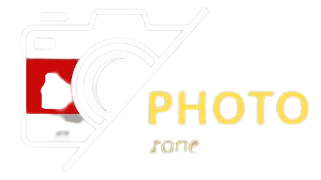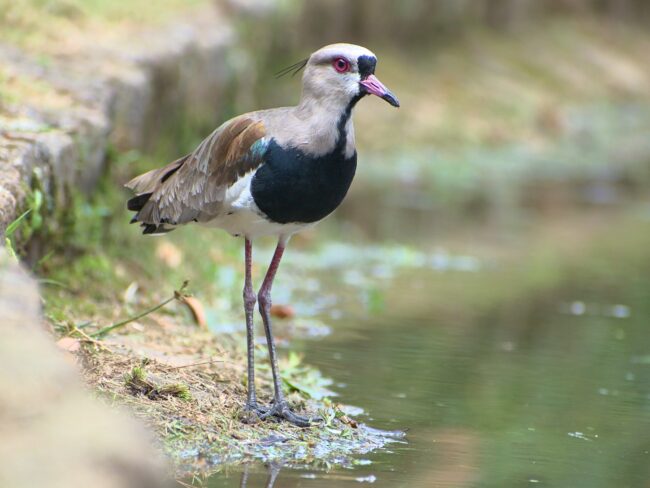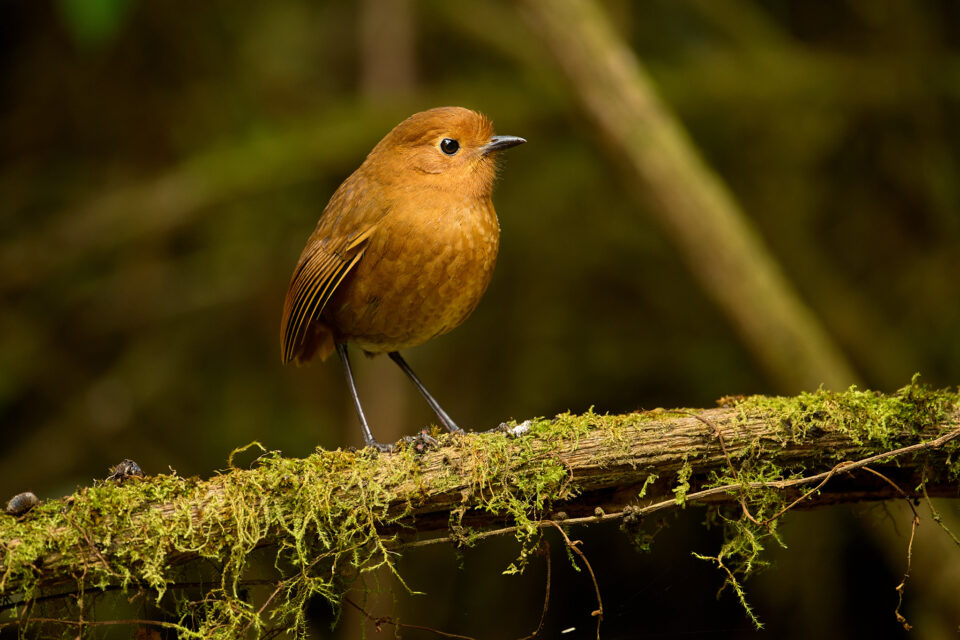Undoubtedly, the best gear for bird photography comes with a shocking price tag. Take, for example, the latest generation 600mm f/4 lens, which costs around $13,000 USD from Nikon, Canon, or Sony, and that’s excluding the camera. Even more modest setups are still expensive and can be compared to the price of used cars.
While it’s true that high-end equipment tends to have a longer lifespan, making the cost per use more reasonable over time, the upfront cost remains a barrier for many bird and wildlife photographers. So, can you capture bird photos with really cheap lenses? In this post, I aim to convince you that the answer is yes, by showcasing a variety of shots taken with lenses starting at just $50!
Why Shoot with Such Cheap Lenses?
I firmly believe that anyone can find joy in bird photography. By adopting the right approach, even affordable lenses can deliver impressive results, making them more than capable of capturing good photos.
The culture surrounding bird photography often glorifies expensive gear. People tend to gather around the latest equipment, showering praise on images captured with it. I’ve even heard individuals express discouragement from pursuing wildlife photography because they can’t afford the newest high-end lens. Therefore, I also aim to inspire those individuals not to give up.
Inexpensive lenses can serve as a stepping stone to test the waters of wildlife photography before fully committing. Even if you eventually upgrade to a larger and more advanced lens, starting with more basic options allows you to gauge your interest and aptitude for wildlife photography. The only caveat is that cheap lenses can be a gateway to craving top-tier glass, so consider yourself forewarned!
Some Examples of Cheap Lenses for Bird Photography
While there are a myriad of low-cost lenses available to photograph birds, here are some examples of lenses that are priced at various levels:
| Mount | Lens | New Price | Estimated Used Price |
|---|---|---|---|
| Micro Four Thirds | Olympus ED 75-300mm f/4.8-6.7 II | $450 | $280 |
| Canon RF | Canon RF-S 55-210mm f/5-7.1 IS STM | $350 | $250 |
| Nikon Z (DX) | Nikon DX 50-250mm f/4.5-6.3 VR | $380 | $250 |
| Sony E | Sony E 55-210mm f/4.5-6.3 | $300 | $160 |
These are only a few examples. When you have used or low-end lenses, it’s not possible to give a comprehensive overview. For instance, when I want to keep my camera in a discreet place or carry something that is compact I’ll be carrying the Nikon 70-300mm f/4.5-6.3G DX AF-P. It can focus very quickly with the Nikon D500 or my Nikon D500 or my Nikon Z6 in DX mode, and costs only $200.

If autofocus isn’t an important factor for you old manual-focus lenses are also able to produce excellent results, especially if have ample light and you slow it down a bit.
Limitations of Cheap Lenses for Bird Photography
The Focal Length Limitation
When I first started my journey into photography I was still a student at the time. my usual lens budget was around $80. So, what’s better than the manual Pentax-A 70-210 with f/4? It’s even better the fact that I found this lens in one of my camera shops and I think it was worthy to be classified as “Bargain” given the amount of painting was gone. I thought it was a great bargain for the price of just $50.

This lens has me thinking about my first restriction in terms of focal length. If you opt to buy an f/4.5-6.3 lens, such as that of the Canon EF 75-300 f/4-5.6 III or the Nikon Z 50-250mm f/4.5-6.3 for Z DX cameras, you’ll need to deal with smaller focal lengths.
Photography of wildlife is certainly feasible with the use of a Supertelephoto lens (as we’ve discussed in depth in this article) however, it’s possible to approach it differently. When it comes to wildlife photography, this might involve shooting smaller animals in parks or bigger creatures. This could also mean being more patient and sitting at a location until wildlife appears. In wild areas I’m often amazed by the speed at which birds appear to me if remain in a spot for more than an hour. I still employ this method to this day, even with more powerful equipment.
Another way to get over the limitation of focal length is to compose shots of the environment. In the world of birds it is the case that detailed portraits are the most popular and a well-constructed photo of the environment will be that is a bit different, but just as beautiful.
My sole caution here is to respect animals and avoid getting too in close proximity to animals that you could cause it pain.
The Sharpness Limitation
Animals contain a lot of fine details, such as feathers and furs, so an inability to see this details clearly shows as a lack of clarity. The lenses that are less expensive, particularly those that are long do not have the sharpness you would expect from a premium lens. One solution is to get closer. If fine details like hairs in a single hair can be observed, then the image will look sharp even though the lens isn’t an excellent performer. In addition, you may employ judicious sharpening methods within your raw processing to provide the appearance of more clarity and sharpness.
Another way to improve zooms is to make use of shorter focal lengths, and then enjoy a more loose framing. It may sound odd and yet, when I was shooting using the Tamron 150-600G2 lens I often tried to take some photos with 400mm rather than 600mm because the lens was more effective at 400mm. You can look through the Photography Life’s Imatest results in our reviews of lenses to discover that this is usually the case with zooms.
The Autofocus Limitation
A few of the cheap lenses for wildlife I’ve tried do not have autofocus and some are just as slow as the speed of a sloth. I used to own an Pentax 300mm F* f/4.5 lens that I purchased used at around 600 dollars. While it was sharp enough however, I discovered that manually focusing was quicker than autofocus! In the course of approximately two years, I shot birds using only manual focus.

While I wouldn’t recommend anyone to try my bizarre setup, there’s an important lesson to be learned since most lenses that aren’t expensive do not have the best autofocus even though they’d be fast compared to what I used. Two factors made me more productive the lens. First, I wanted to be content without taking any bird-in-flight photos. The second was to be aware of the behavior of birds.
In gaining a better understanding of the different species of birds and their behavior I gained a sense about when certain species will remain. And I’m able to say I’m able to say that even using my speedier equipment, paying close at the behavior of animals is extremely beneficial. For instance, at particular time of the year, I’m aware that White-breasted Nuthatches in my area prefer to spend a little few extra minutes perched at the tree’s base which has enabled me to take many nice photos of them at eye level.

Use the Advantages You Have
In the past, when I was experiencing one of my desires to have longer focal lengths I purchased a mirror lens such as that is the Tamron 500mm 55BB F/8. The lens came out two years prior to when I was born and was priced at around 150 dollars on ebay. However, I have used this lens in the last year, along with my 500mm f/5.6 lens. Do you think this lens has anything more to offer than an ultrasharp lens like those with 500mm PF? Actually, yes.

First of all, it’s important to note that the Tamron 500mm mirror-lens is quite lightweight at 595g (21 oz) and did not add much weight to the bag I was carrying. It also has an incredibly large magnification at 0.33x which is nearly double the magnification of the 500mm lens, which is 0.18x. So, in the park with a couple of curious geese I captured an interesting photo that wouldn’t be possible with the 500mm PF because of the 500mm PF’s larger maximum focus range:
I also have an Olympus 40-150 f/4-5.6 R. It could be among the lowest-cost lenses available this moment, since it often sells for $100. Limited zoom? Check. Performance of the corner in the 1930s? Check. But its overall performance is quite surprising, and it’s so light, it can be taken almost anywhere.

Do You Need Expensive Lenses?
There’s no doubt that you can achieve incredible things with low-cost lenses. I’d suggest that they be useful even when you have an expensive setup.
However, I have to admit that the less expensive equipment I’ve used can be used in a small number of scenarios. While I think that’s the case of all lenses in a way, but with a more powerful lens, I never find myself confined by the equipment I use. As an avid Nikon shooter, I’m currently using my Nikon 500mm f/5.6 I’m using that isn’t far from the price of 500mm F/4.
When I reflect back on my photographic adventures I can see that there are certain images I didn’t capture that I wouldn’t have missed if I were using an EF 500mm. For someone whose wildlife and bird photography is now a all-time pastime, I consider this kind of lens to be essential. It’s like if I were on a deserted island brimming of wildlife with only the D500 with 500mm of PF. I’d be content for as long as I could find a way to recharge the batteries.

However it is the golden age of quality and affordable telephoto lenses from almost every manufacturer. I’ve been awestruck at this Sony 200-600mm lens which most of my colleagues are using for bird photography. It is impossible to imagine how this level of performance could be available in the past ten years without the much more expensive supertelephoto prime. Canon also offers the 600 and 800mm F/11 lens which just came out. They are both less than 1000 dollars and can produce decent images in bright lighting.
Conclusion
I’ve been photographing wildlife and birds for approximately five years. The one thing I’ve discovered is that with the right amount of patience and a little imagination you can make stunning photographs with any lens. The kinds of photos you can make can differ between lenses however with the sheer amount of species of wildlife that exist you will discover a method to showcase the splendor of the planet’s diversity.
This is why I urge you to take a shot at photography with birds, no matter which lens you have. You may get the shot you never thought could be possible.














Leave a Reply